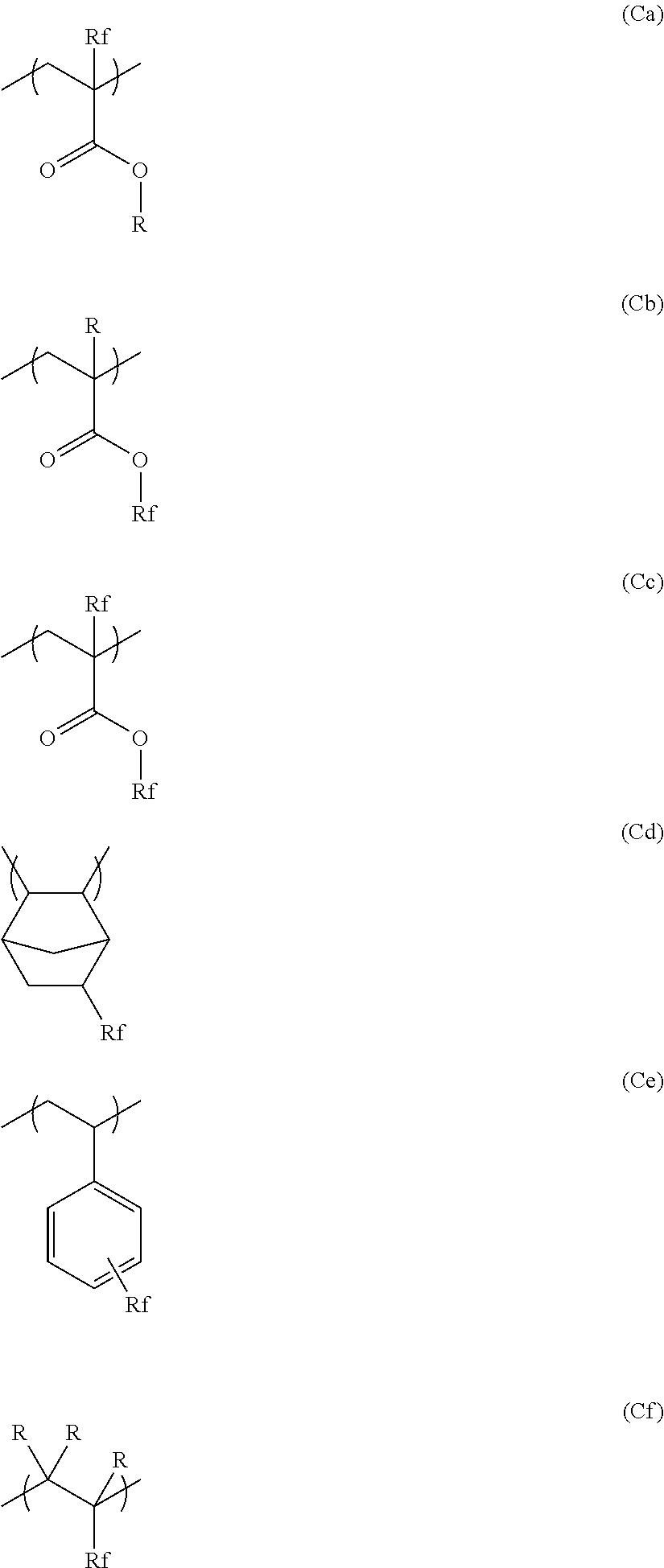Composition for imprints, pattern and patterning method
a technology of imprints and patterns, applied in the field of imprint composition, can solve the problems of so-called magnetic field expansion, cost reduction and throughput increase, and difficult to satisfy all three of micropattern resolution, and achieve the effect of excellent mold releasability and good pattern formation
- Summary
- Abstract
- Description
- Claims
- Application Information
AI Technical Summary
Benefits of technology
Problems solved by technology
Method used
Image
Examples
examples
[0169]The characteristics of the invention are described more concretely with reference to Production Examples and Examples given below. In the following Examples, the material used, its amount and the ratio, the details of the treatment and the treatment process may be suitably modified or changed not overstepping the scope of the invention. Accordingly, the invention should not be limitatively interpreted by the Examples mentioned below.
[Production Examples]
(Production of Polymer (C1))
[0170]Methyl ethyl ketone (4.2 g) was put into a three-neck flask and heated at 80° C. in a nitrogen current. A solution prepared by dissolving tridecafluorooctyl methacrylate (4.5 g), 4-tert-butylcyclohexyl methacrylate (3.9 g), a compound “1” (2.0 g), and a polymerization initiator (Wako Pure Chemical's V-601) (0.48 g) in methyl ethyl ketone (38 g) was dropwise added to the above, taking 4 hours. After the addition, these were reacted at 80° C. for 3 hours to give a polymer “2”. Diazabicycloundecen...
examples 1 to 7
, Comparative Examples 1 to 5
[0175]A polymerization initiator P1 (2% by mass) and a polymer ingredient (1% by mass) of polymers (C1) to (C4) having a functional group with at least one of a fluorine atom or a silicon atom and having a polymerizable functional group or polymers (X1) and (X1) or low-molecular-weight polymerizable compounds (X3) and (X4) having a fluorine atom or a silicon atom were added to the polymerizable monomer as in Table 1 shown below, thereby producing photoimprint compositions.
(Polymerizable Monomer)
[0176]R1: benzyl acrylate[0177]R2: neopentylglycol diacrylate[0178]R3: trimethylolpropane triacrylate[0179]R4: urethane acrylate (Gohselac UV7500B, by Nippon Gohsei)[0180]R5: m-xylylene diacrylate[0181]R6: 1-naphthylmethyl acrylate
(Polymerization Initiator)[0182]P1: 2,4,6-trimethylbenzoyl ethoxyphenyl phosphine oxide
(Lucirin TPO-L, by BASF)
[0183]The obtained composition (10 μl) was put on a slide glass, and, as a patternless mold, a slide glass fluorocoated with a...
PUM
| Property | Measurement | Unit |
|---|---|---|
| size | aaaaa | aaaaa |
| size | aaaaa | aaaaa |
| size | aaaaa | aaaaa |
Abstract
Description
Claims
Application Information
 Login to View More
Login to View More - R&D
- Intellectual Property
- Life Sciences
- Materials
- Tech Scout
- Unparalleled Data Quality
- Higher Quality Content
- 60% Fewer Hallucinations
Browse by: Latest US Patents, China's latest patents, Technical Efficacy Thesaurus, Application Domain, Technology Topic, Popular Technical Reports.
© 2025 PatSnap. All rights reserved.Legal|Privacy policy|Modern Slavery Act Transparency Statement|Sitemap|About US| Contact US: help@patsnap.com



